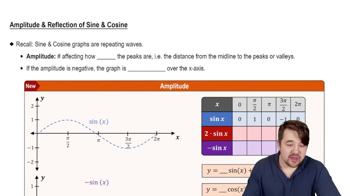Textbook Question
In Exercises 79–82, graph f, g, and h in the same rectangular coordinate system for 0 ≤ x ≤ 2π. Obtain the graph of h by adding or subtracting the corresponding y-coordinates on the graphs of f and g.f(x) = 2 cos x, g(x) = cos 2x, h(x) = (f + g)(x)
593
views






